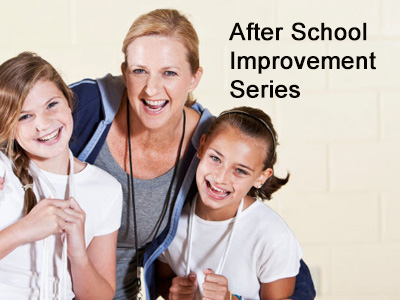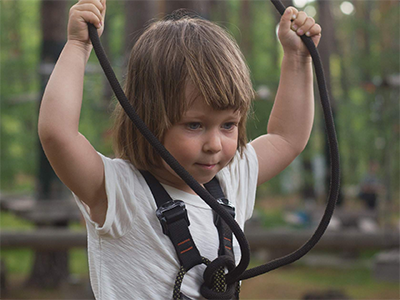 |
Coaching with Head and Heart |
2.00 |
Leaders and managers need strategies to support others in their own growth and development. In this course, participants will be introduced to a coaching process that supports individuals to make more conscious decisions, build off their strengths and internal resources and take new action. Participants will understand when coaching is needed, the mindset required, and the critical skills needed for effective coaching, including deep listening and inquiry. |
 |
Construction Safety & Prevention Program: Leadership Commitment to Operational Safety |
0.25 |
Leadership Commitment to Operational Safety is part of a twelve-part construction safety and prevention program. This course covers the basics for setting up an operational safety program. It will discuss who is responsible for each step, and the goals behind operational safety. |
 |
Knowing Yourself as a Leader |
2.00 |
Leadership in out-of-school time programs ranges from simple observation to active participation in program design and implementation. Leadership is an on-going process involving continuous learning, and taking time to discover their values, goals, skills, talents, and strengths will help staff to understand the type of leaders they are and the type of leaders they desire to be. In this course, participants will learn to develop a personal mission statement and identify strengths and weaknesses in skill development. |
 |
Strategies for Managing Risk |
1.00 |
Learn how to develop proven strategies for managing risk within your institution. During this course you will learn how to identify possible risks or hazards which could impact your operation. We will discuss the various levels of risk; the risk assessment process; possible outcomes and most importantly how to manage the risk in an effort to minimize exposure. We will share with you a risk management model of preparedness which allows your institution to be systematic and structured in your approach to managing risk. By implementing effective strategies for managing risks you will learn to assess the possible risks or hazards, categorize and prioritize the risk, assess the possible consequences. You will learn how to assign responsibility to effectively manage the risk process. Join us as we share success stories and techniques we learned along the way. |
 |
Creating a Supportive Classroom Community (CDA 3) |
2.00 |
Learn ways to bring out nurturing, caring behaviors in children and youth to create a classroom community where children and youth support each other. Learn how to use non-competitive games to foster acceptance of all children and youth. Identify the strengths and weaknesses for both you and the children and youth in your program, and how to put the strengths to good use creating a sense of acceptance and community. This course is designed to be part of a Child Development Associate (CDA) Credential™ curriculum. It covers CDA Subject Area 3: Supporting Children's Social and Emotional Development and may also be taken as a stand-alone learning event or as part of a broader early childhood education curriculum. |
 |
Developing Methods of Observation (CDA 7) |
2.00 |
Learning child observation skills can be a powerful tool for solving some of the most difficult problems faced by child care providers. Concerned about a child’s behavior? Want to know how to plan successful activities? Observation skills can help. Learn more about each child and his/her development using the methods of observation in this course. This course provides examples of good observation techniques and demonstrates skills necessary for useful observations. It covers CDA subject area 7: Observation and Assessment, and can also be taken as a stand-alone learning event or as part of a broader early childhood education curriculum. |
 |
Discuss Results: Testing Hypotheses |
1.00 |
Lesson seven of ten. You have graphs and statistical tests summarizing your results, but how does this help you test your hypotheses? Listen to a research team discuss whether they can reject one or more working hypotheses based on their results. Learn how the team distinguishes between causation and correlation in applying critical thinking skills to decide whether their measurements were good enough to really be a test of the hypotheses. |
 |
After School Improvement Series: Emergency Action Plans |
0.50 |
Like all other early childhood and school-age settings, after school programs need to consider how they prepare for and respond to emergency situations, from natural disasters, like storms, earthquakes, tornados, flash floods, or volcanic eruptions; fires; power outages; missing children; or acts of violence, including active shooter situations. Some emergency situations may require evacuation, while others may initiate a lock down, or shelter-in-place. The best way to prepare for emergency situations is to plan for them. We can do this by considering the kinds of emergency situations we might encounter, and then developing a series of procedures and protocols for responding to them. Your program’s Emergency Action Plan sets out your role and responsibilities should any of these emergencies occur.
|
 |
Supervising with Head and Heart |
2.00 |
Like young people, our own social-emotional and character competencies are important to reflect on if our desire is to create environments in which adults can successfully support young people in developing such skills. In this course, participants will explore social-emotional and character skills that support supervisors, as well as the personal roadblocks, power and potential pitfalls that supervisors may experience. Participants will also become familiar with a management framework to strengthen their supervision. |
 |
Assessing and Implementing a Safe Child Care Environment (CDA 1 & 5) |
2.00 |
Little explorers have big ambitions! As infants and toddlers embark on their journey of discovery, their safety becomes your top priority. This course equips you with the knowledge and tools to proactively create safe and stimulating environments. Learn to assess play spaces, evaluate activities, and refine existing practices, fostering a nurturing atmosphere where exploration and safety flourish hand-in-hand. |











